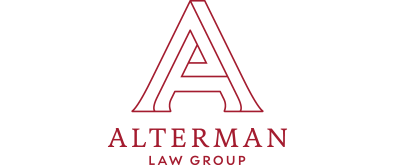A year and a half ago, in Albany & Eastern Railroad v. Martell, 298 Or App 99 (2019), the court of appeals held that homeowners who had used a private rail crossing to access a public road for 75 years without permission and without interruption had not acquired a prescriptive easement to use the rail crossing. The court’s holding significantly narrowed the ability of adverse users of land to claim prescriptive easements over accessways. We wrote about the court’s decision here, criticizing it in the polite terms that practicing attorneys use when commenting on the work of appellate courts.
In the summer of 2020 the supreme court reversed the court of appeals and brought Oregon law on prescriptive easements back on track. Albany & Eastern Railroad v. Martell, 366 Or 715 (2020).
The facts were that in 1910 the owner of a 75-acre tract in Linn County divided the tract into two parts, conveying the north (or west) parcel to his daughter and the south (or east) parcel to his son. Both tracts were accessed by a private road that connected to a public highway. The son later sold the south parcel to Sharinghausen. In 1928, the daughter and Sharinghousen sold strips of their property to a railroad company, which built a railroad that cut off the two parcels from the nearby public highway. The daughter reserved an easement to cross the track at the private road. Sharinghousen did not reserve an easement, though his tract had no other access.
In 1942 Sharinghousen divided his tract into eight lots, on which homes were built. Since 1942 the homeowners have crossed the railroad to get to the public highway without objection from the railroad.
From at least 1953 the railroad treated the crossing as a public crossing, at one point even posting a “public crossing” sign at the crossing.
Albany & Western bought the railroad business in 2007 and bought the land beneath the railroad track in 2012. After it bought the land it discovered that the eight houses on the old Sharinghousen tract did not have an easement to cross the railroad. It then sued the eight homeowners for trespass. The residents counterclaimed and asserted that they had acquired a prescriptive easement to continue to use the crossing. They won at trial.
The court of appeals reversed the trial court. The court of appeals based its decision on two main facts: first, the railroad’s predecessor had believed the crossing to be a public crossing, going so far as to place a “public crossing” sign at the track; and second, the presumption that the homeowners’ use of the private crossing was adverse to the railroad did not apply, because the railroad believed that it did not own the crossing and therefore would not have believed that the homeowners were using the crossing adversely to the railroad.
To the court of appeals, the railroad’s mistake excused its failure to investigate what it was buying. In the court’s words, the presumption of adversity did not apply when “the nature of the land or the relationship between the parties is not likely to put the owner on notice of the adverse nature of the use.”
The court of appeals overlooked the principle that purchasers of land are deemed to be on notice of claims that are apparent from visual inspection. If the railroad had inspected the track when it bought it, the railroad would have noticed that eight homes used that crossing as their only access to a public road, and should have inquired into their right to use it.
In reversing the court of appeals, the supreme court returned the law of prescriptive easements to the status quo ante, making one significant addition.
The three courts that heard the case all understood the basic principles of the law of prescriptive easements. A person who uses the land of another without objection or interruption for ten years, and whose use is open, hostile, notorious, continuous, but not exclusive, can acquire a prescriptive easement to continue using the land. The law presumes that one who uses the land of another is using it adversely to the true owner.
In this case, there was no real dispute about the facts. The trial court drew one legal conclusion from those facts; the court of appeals drew the opposite conclusion. The supreme court agreed with the trial court. The homeowners had used the crossing since 1942 without permission and without objection. The railroad could have seen from even a casual inspection that the homeowners were using the crossing because the crossing was the homeowners’ only access. The railroad’s predecessor was thus on notice of the homeowners’ use since 1942, and the Albany & Eastern was (or should have been) on notice of the homeowners’ use when it bought the land.
The supreme court’s significant addition to Oregon easement law is to adopt the principle that the subjective beliefs of the landowner and the easement claimant are generally not relevant in deciding whether the claimant’s use is adverse, bringing our law into accord with decisions in Washington and Idaho. Albany & Eastern Railroad Co. v. Martell, 366 Or at 728.
In the court’s words, “any subjective misunderstanding regarding the public or private nature of the crossing does not affect the application of the presumption of adversity.” Albany & Eastern, 366 Or at 729. The railroad may have wrongly believed that the crossing was a public crossing, but its mistaken belief did not make the homeowners’ use permissive, nor did it justify the railroad sitting on its rights for nearly three quarters of a century. Even a railroad can’t switch off caveat emptor.


